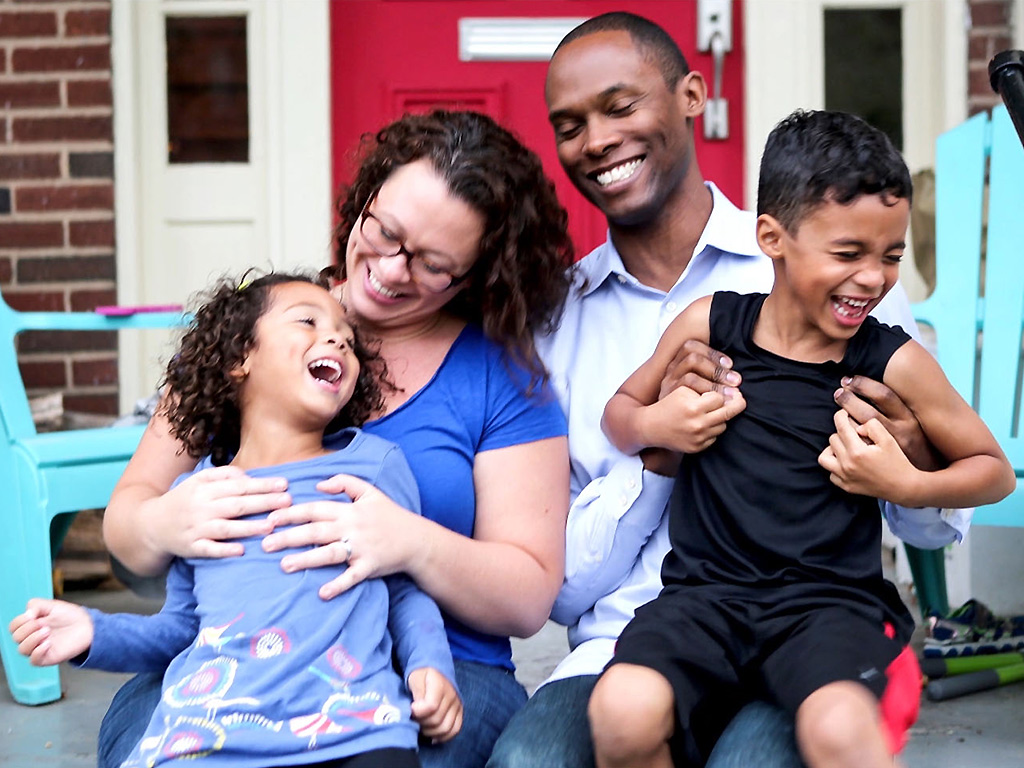It all used to be so simple: a baby was born, declared either a boy or a girl, and families would go on their merry way.

As time has advanced and as the internet has burgeoned, causing information to flow freely around the globe, the concept of “gender” has changed immensely over the last few decades. Previously marginalized communities have come together to support and encourage one another, whether they’re composed of intersex individuals, transgender folks or people who identify as non-binary.
Don’t know what each of those terms mean? Then you’re a prime candidate to watch National Geographic’s Gender Revolution, a spellbinding, fascinating look at the transforming landscape of gender, hosted by TV news anchor Katie Couric. Starting with the rudimentary biological facts, the two-hour documentary goes from simple to complex, allowing even the most uninformed viewer to follow along.
Here’s what you can expect from the engrossing, oftentimes touching Gender Revolution.
Katie Couric is an ideal guide
There are multiple reasons why Couric is the perfect person to host this documentary. Most notably, she’s part of a generation that is less probable to embrace these changes to a rigid binary structure, and most likely isn’t familiar with the changes in terminology and ideology. As a result, the viewer — no matter their age — has the opportunity to learn along with her. Couric even admits at the outset that she was hesitant to accept the changing definitions of gender.
“I had sort of a baseline level of knowledge about these issues, but I had never really rolled up my sleeves and spent time with many of these individuals,” said Couric. “So everything was a surprise to me because I was learning something every day. I tried to put myself in the position of people who wanted to learn and understand these issues, and to ask the questions I thought people at home would be asking if they had the privilege and opportunity to meet some of the people you see here.”
WATCH BELOW: Katie Couric talks Gender Revolution
Couric also famously asked Orange Is the New Black star (and transgender woman) Laverne Cox about her genitalia back in 2014 in a televised interview, which is considered a gauche and highly invasive line of questioning. Since then, Couric has grown immensely, and considers her mistake a highly teachable moment for those who don’t know much about transgender people.
“It was an effort to educate the public about transgender individuals, and ironically, what people didn’t realize is that it was a taped show, and I could have taken that part out,” said Couric. “But I tried to use it as a teachable moment, and to show people there are appropriate and inappropriate ways to have these conversations. But I think, obviously, I had a lot to learn then, and I still … I’m not the world’s expert on gender issues. I certainly know a lot more having done this documentary.”
You get to hear the stories directly from the people themselves
Lots of documentaries use voiceovers and professionals to fill in the gaps, to explain to the audience what’s going on, or perhaps to outline historical significance of one event or another. Those exist in Gender Revolution, but to a far lesser extent, instead allowing the voices of intersex, non-binary, trans and other gender non-conformists to tell their own stories. What better way to learn about another person’s experience than to hear it from their own mouth?
READ MORE: Occupied! Not enough gender-neutral washrooms on Montreal campuses: advocates
You will learn a lot
There is an incredible variety of gender identities out there in the world, and it’s astounding to have your eyes opened to the possibility of a non-binary gender system. Sure, it’s far simpler to define someone (or yourself) as Column A or Column B, but it’s more of a testament to humanity to embrace the spectrum. Even the basics are dealt with in Gender Revolution: the difference between sex and gender, the fact that your genitalia doesn’t dictate your sexual orientation nor your gender, and even the biological beginnings of a human embryo in the womb are analyzed — since there is some scientific evidence that hormone exposure or brain structure may play a part in one’s gender identity.
Arguably one of the most fascinating parts of the documentary is the connection between gender and biological factors. Long considered a “nurture” result (a.k.a. you become more of a “boy” by playing with trucks and engaging in sport), it turns out gender might be something determined in the womb.
“This is the reason, really, we put out the gender issue at National Geographic magazine, why we really thought, after almost 130 years of publishing, it was time to dive into this subject,” said Susan Goldberg, editor-in-chief of National Geographic. “This is a subject that people are afraid to talk about. It is a fraught conversation, and we thought, if we put it out there, not just about transgender, but looking at gender in the broadest spectrum, and help people have that conversation, that maybe we could do something that is enlightening and educational, and that’s what National Geographic is all about.”
The medical community is surprisingly adaptive to the gender revolution
READ MORE: A more tolerant country? Most Canadians support transgender rights, poll suggests
“The medical community, like the rest of society, was very binary up until quite recently, in terms of the thought process, and also gender identity was thought to be malleable, changeable. Because we all believed that was true, we felt comfortable with intersex kids, for example, saying, “Well, let’s just do what’s convenient or pretty and put them in a category so that they won’t even know about it, and it’s OK because we will just convince them that the gender identity matches whatever it is that we did to them.”
“Recognizing that gender identity is biological shifts that paradigm substantially,” he continues. “It’s still a problem. The medical community is slow to change, and those data are more than 10 years old, and yet certainly at academic medical centres, more physicians are trying to be thoughtful and get out of the framework, but we’re still needing to rewrite the framework. Gender identity being a biological phenomenon is becoming well-recognized in the conventional medical community, and that is important for parents to recognize so that they are actually listening to their children.”
Maybe this should have been called ‘Gender Evolution’
This transformation isn’t just happening to the people in this documentary or the people who define themselves as outside the gender binary — this is a worldwide phenomenon taking place all around us. It’s taking place within our families, to distant relatives, our friends. It takes a collective understanding to really bring gender acceptance to the level of “normalcy,” so you could say it’s an evolution we all have to go through.
READ MORE: Will Smith explains why he doesn’t impose gender stereotypes on son, Jaden
Transgender activist Sabel Samone-Loreca thinks this documentary is a step in the right direction, towards acceptance.
“It’s one of those things where I take off my shoes and you step into my shoes and you walk a road in my life,” she continued. “Tell me how long you can make it. Most trans women wake up every morning. They get dressed, and they walk out their door, and they have to deal with everything that society says is no good for them or they’re not worthy of. And they do it anyway, and they do it with their head held high.”







Comments